Abstract
From July 1974 through June 1976, a number of isolates of Escherichia coli, Klebsiella pneumoniae, and Pseudomonas aeruginosa from the Burn Center exhibited a shift to smaller zone diameters with gentamicin than did isolates from the general hospital population. Although many had zone diameters ≥13 mm and would have been considered susceptible by this breakpoint, they were found to have minimal inhibitory concentrations (MICs) of ≥8 μg of gentamicin per ml by agar dilution testing. Zone diameters and MICs of gentamicin, tobramycin, and amikacin were subsequently compared for 168 isolates from both the Burn Center and general hospital. The results revealed many isolates that fell into presently used gentamicin- and tobramycin-“susceptible” categories by disk diffusion tests but were resistant by MIC. The data indicated that criteria for gentamicin disk diffusion testing should include an intermediate or indeterminate category, and that the limits of the intermediate category for tobramycin and amikacin should be expanded.
Full text
PDF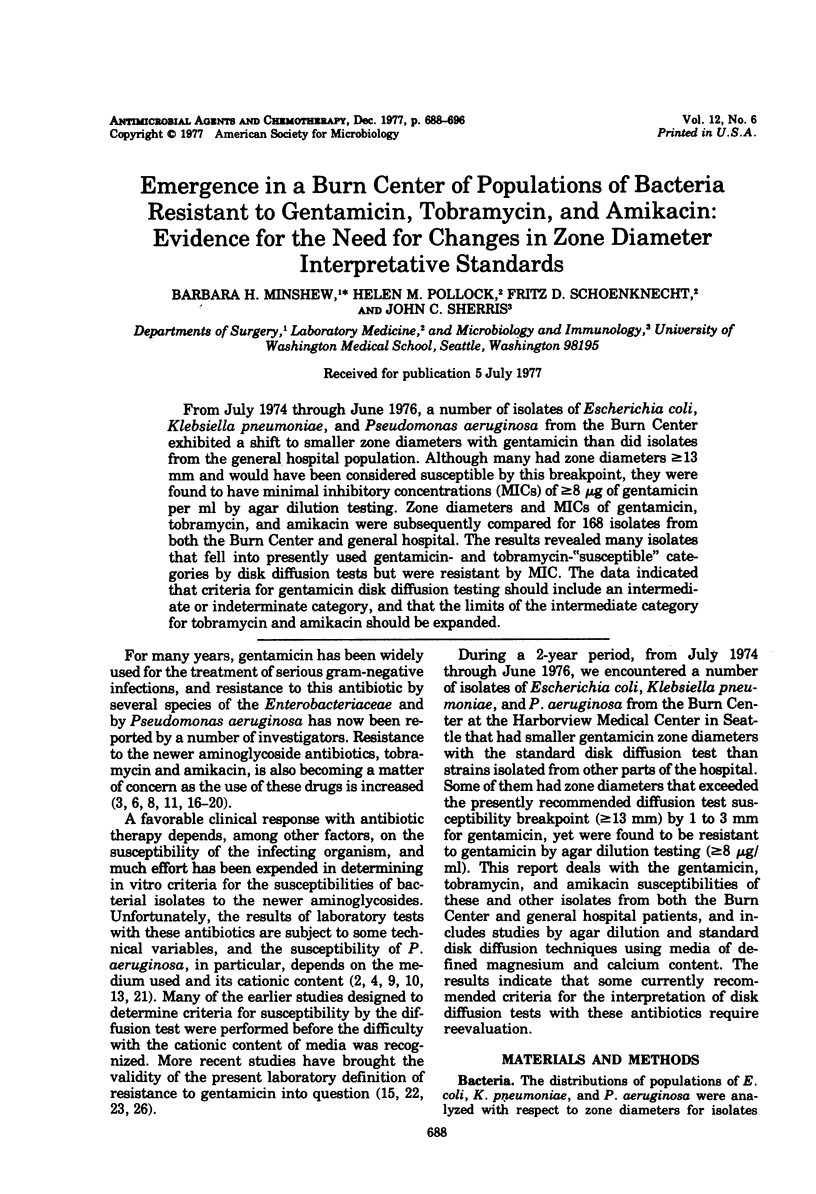
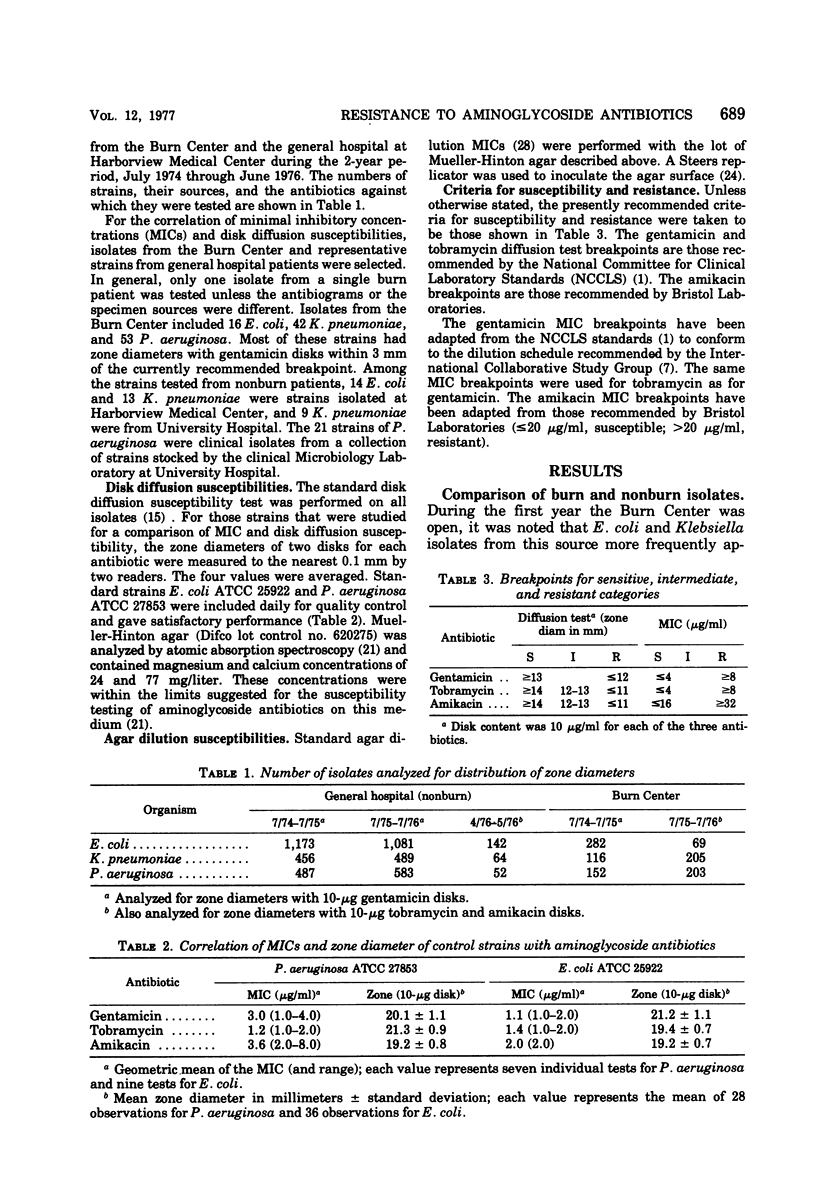
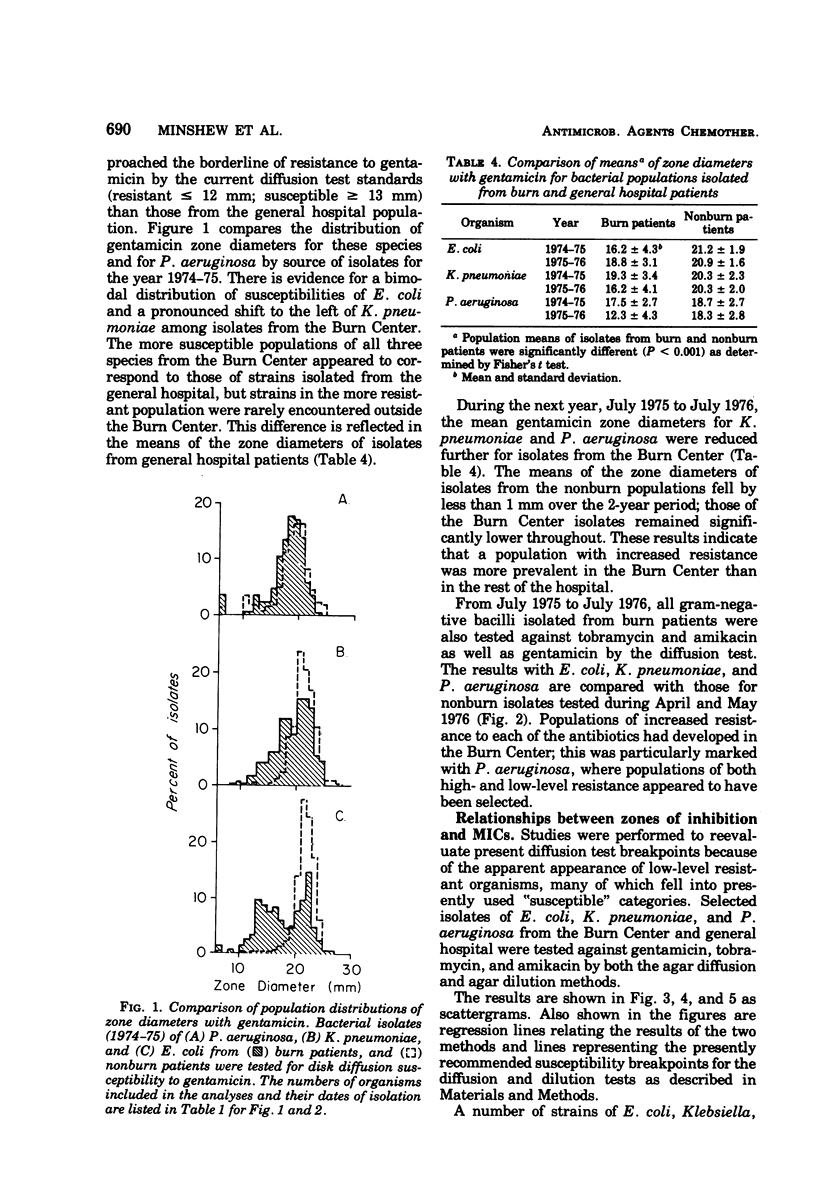
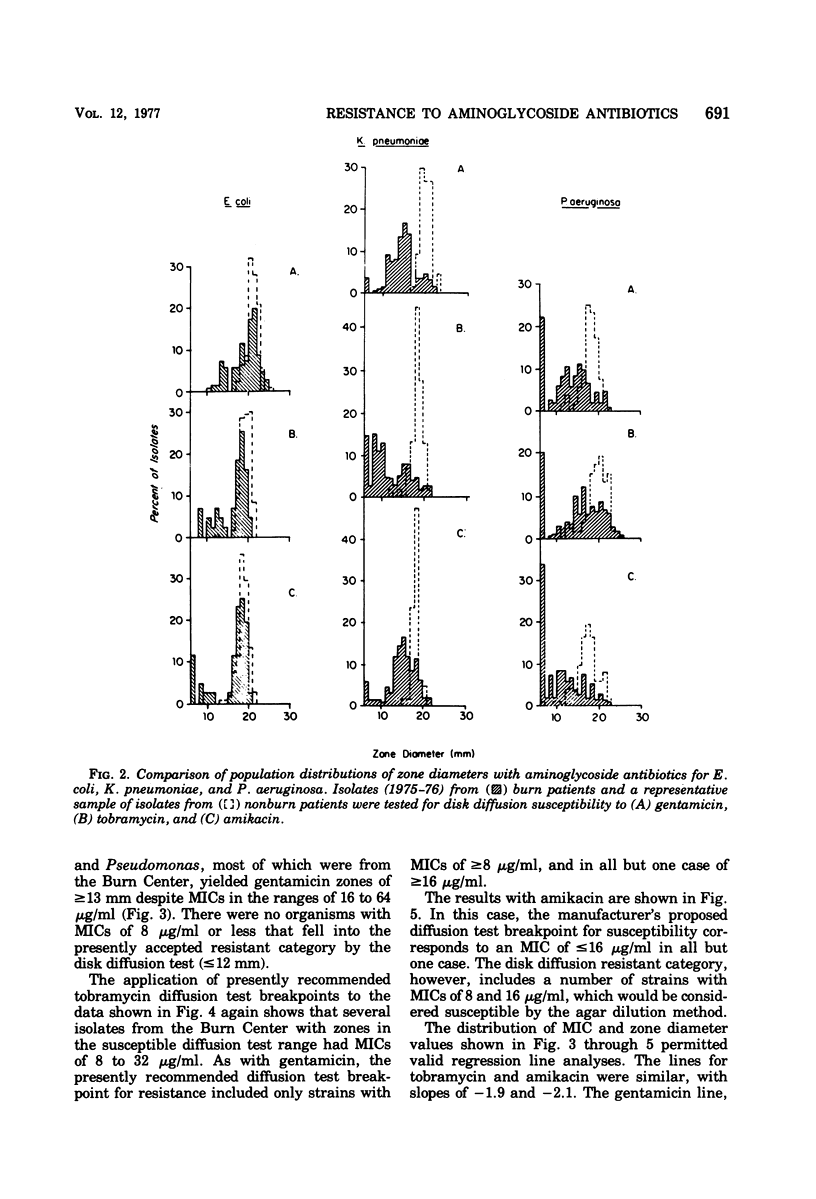
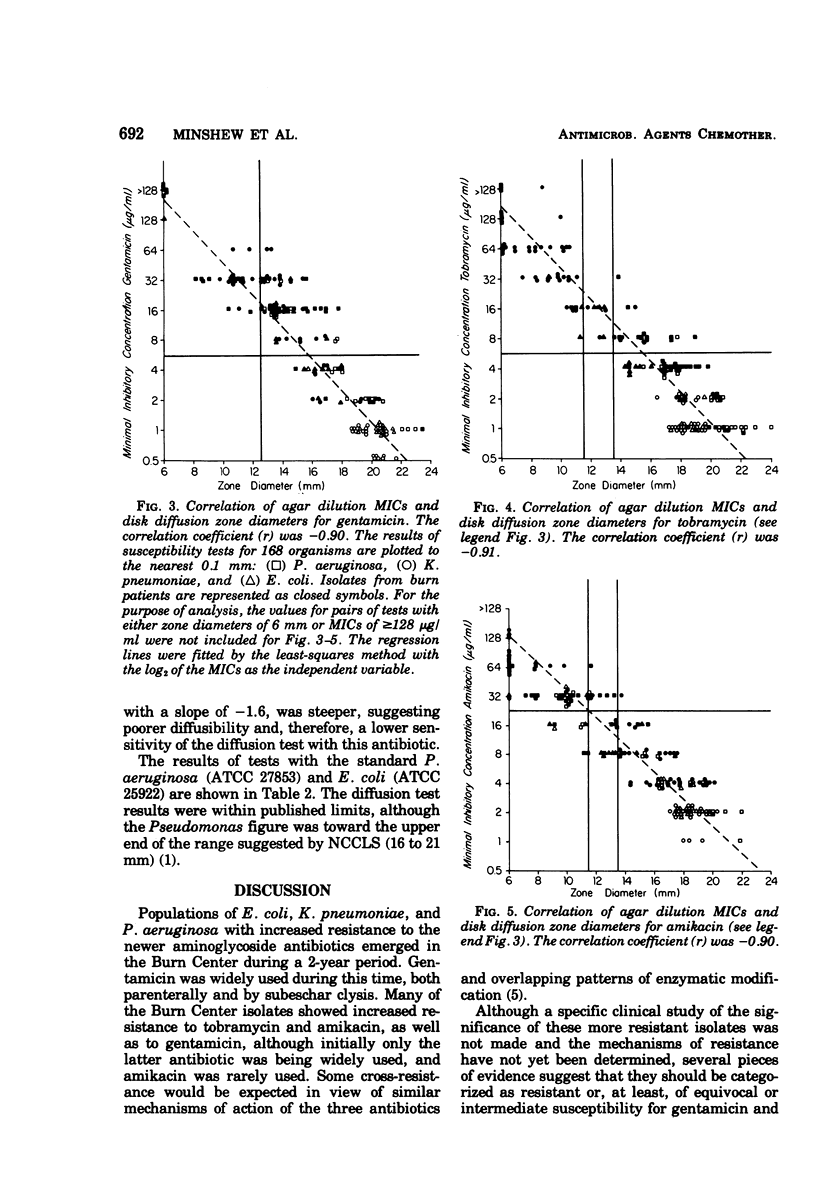
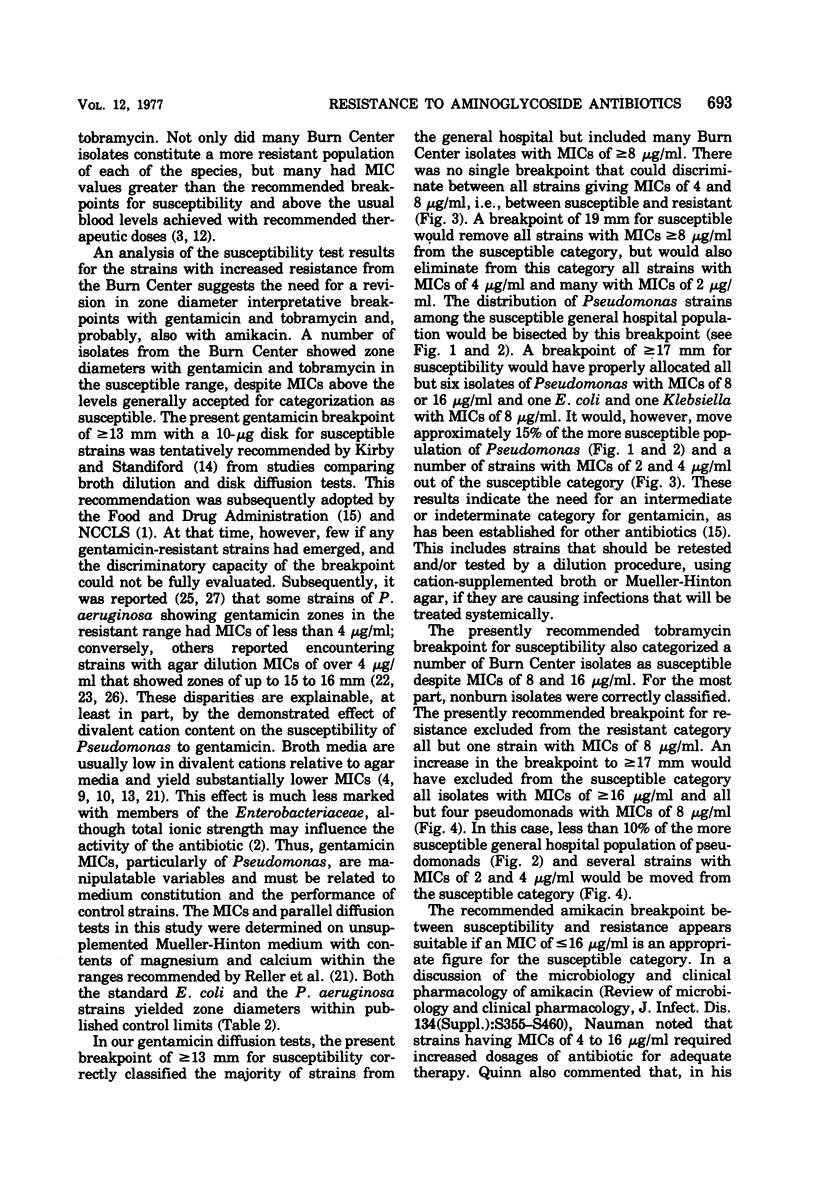
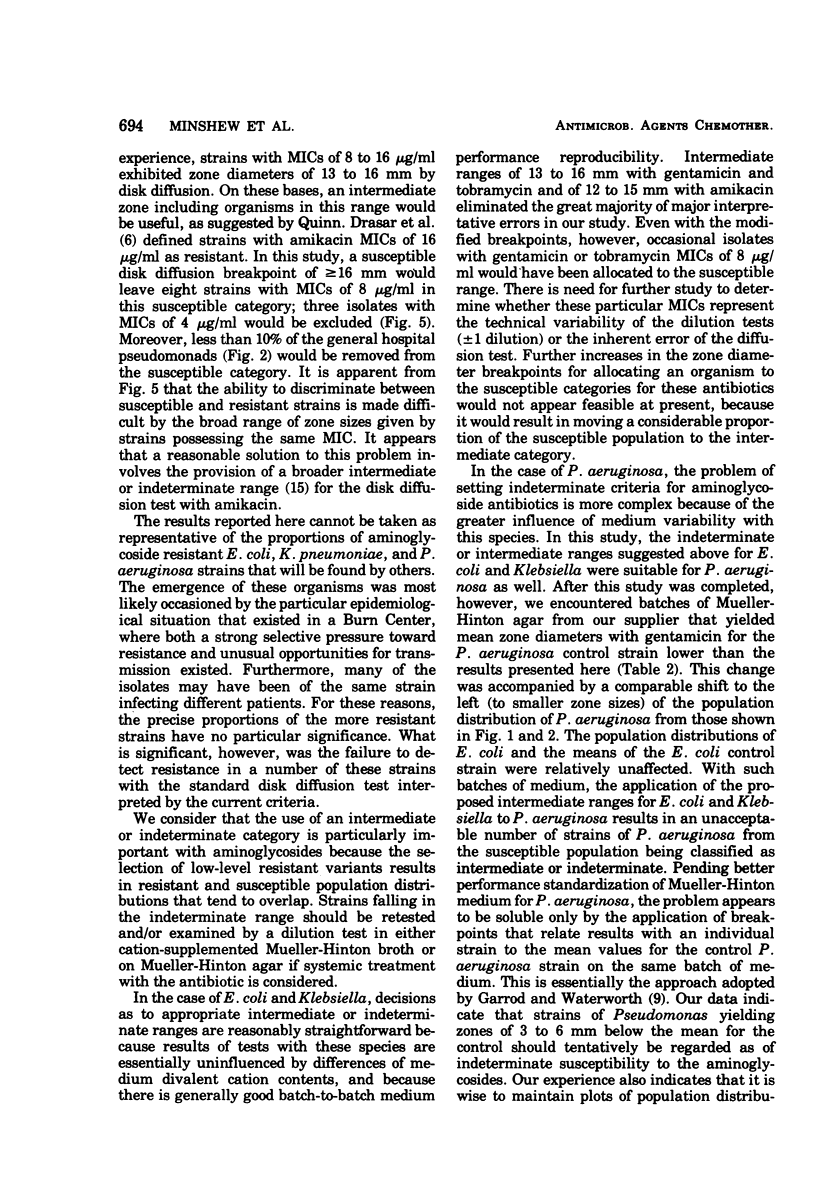
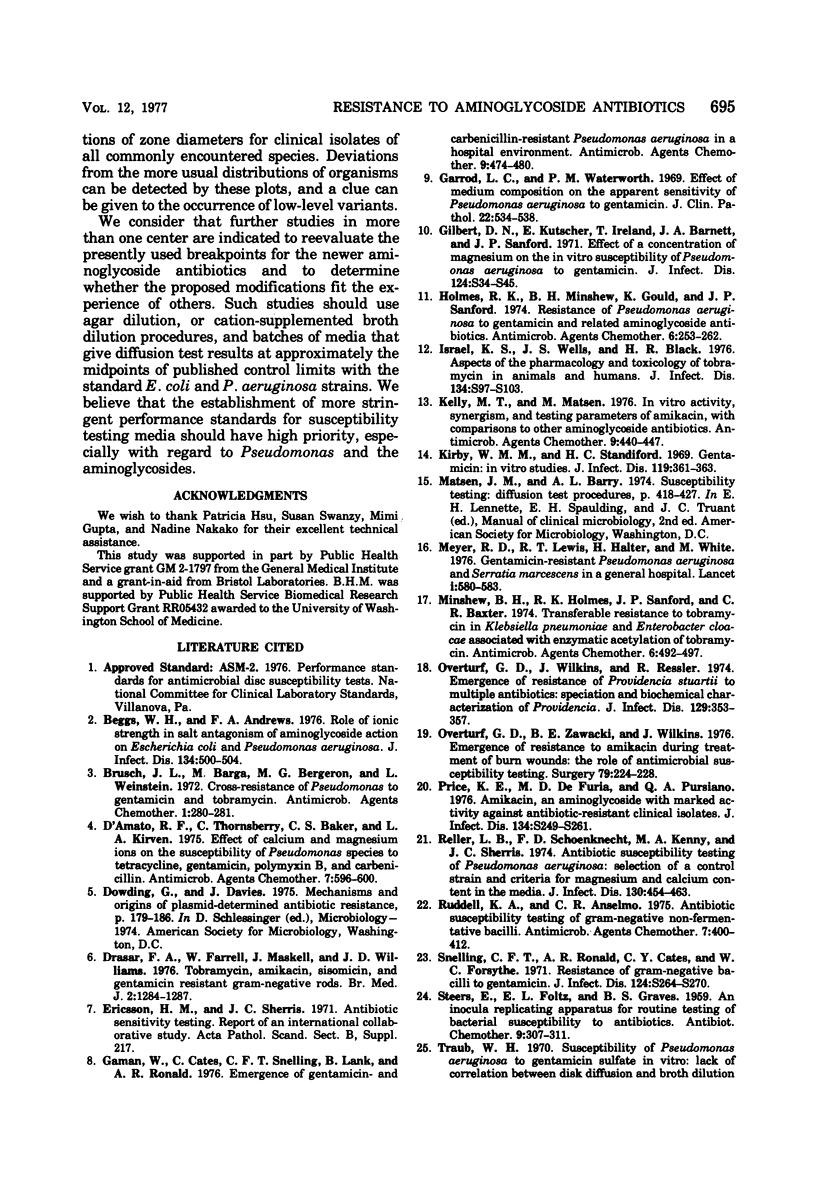
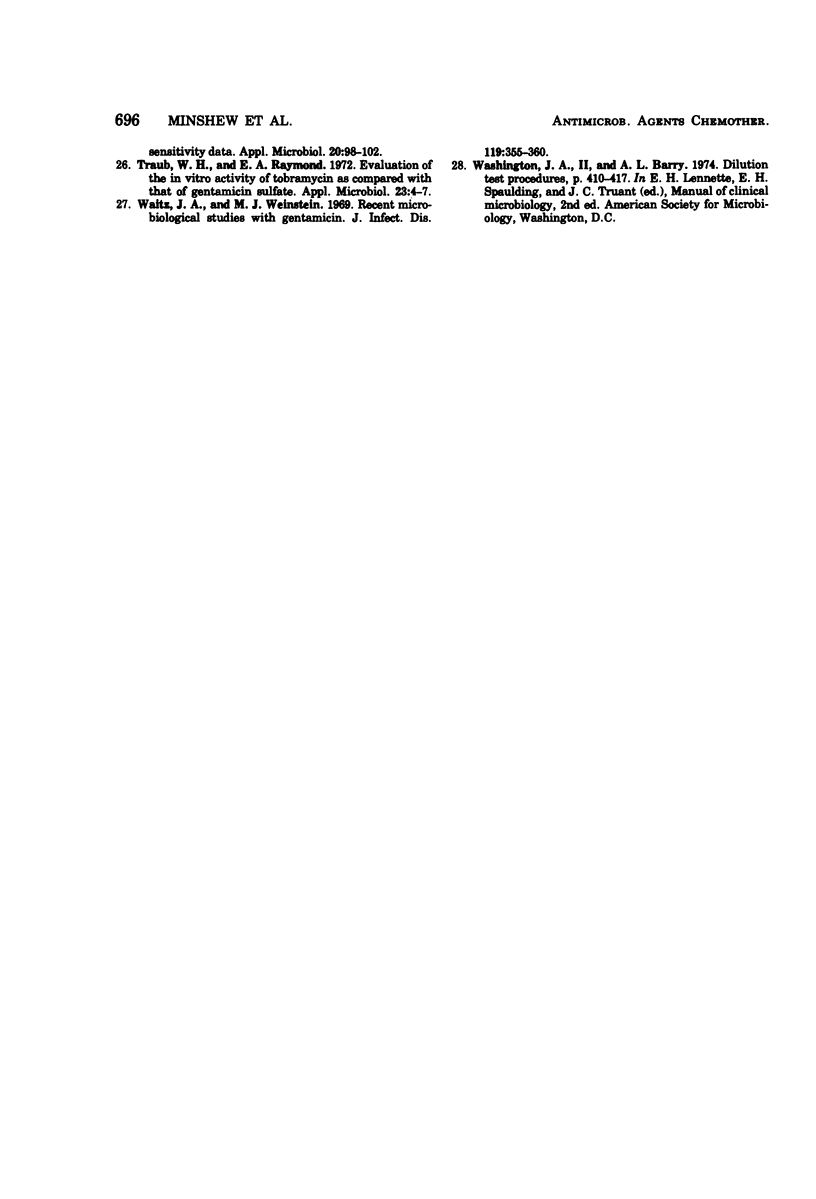
Selected References
These references are in PubMed. This may not be the complete list of references from this article.
- Beggs W. H., Andrews F. A. Role of ionic strength in salt antagonism of aminoglycoside action on Escherichia coli and Pseudomonas aeruginosa. J Infect Dis. 1976 Nov;134(5):500–504. doi: 10.1093/infdis/134.5.500. [DOI] [PubMed] [Google Scholar]
- Brusch J. L., Barza M., Bergeron M. G., Weinstein L. Cross-resistance of Pseudomonas to gentamicin and tobramycin. Antimicrob Agents Chemother. 1972 Mar;1(3):280–281. doi: 10.1128/aac.1.3.280. [DOI] [PMC free article] [PubMed] [Google Scholar]
- D'amato R. F., Thornsberry C., Baker C. N., Kirven L. A. Effect of calcium and magnesium ions on the susceptibility of Pseudomonas species to tetracycline, gentamicin polymyxin B, and carbenicillin. Antimicrob Agents Chemother. 1975 May;7(5):596–600. doi: 10.1128/aac.7.5.596. [DOI] [PMC free article] [PubMed] [Google Scholar]
- Drasar F. A., Farrell W., Maskell J., Williams J. D. Tobramycin, amikacin, sissomicin, and gentamicin resistant Gram-negative rods. Br Med J. 1976 Nov 27;2(6047):1284–1287. doi: 10.1136/bmj.2.6047.1284. [DOI] [PMC free article] [PubMed] [Google Scholar]
- Ericsson H. M., Sherris J. C. Antibiotic sensitivity testing. Report of an international collaborative study. Acta Pathol Microbiol Scand B Microbiol Immunol. 1971;217(Suppl):1+–1+. [PubMed] [Google Scholar]
- Gaman W., Cates C., Snelling C. F., Lank B., Ronald A. R. Emergence of gentamicin- and carbenicillin-resistant Pseudomonas aeruginosa in a hospital environment. Antimicrob Agents Chemother. 1976 Mar;9(3):474–480. doi: 10.1128/aac.9.3.474. [DOI] [PMC free article] [PubMed] [Google Scholar]
- Garrod L. P., Waterworth P. M. Effect of medium composition on the apparent sensitivity of Pseudomonas aeruginosa to gentamicin. J Clin Pathol. 1969 Sep;22(5):534–538. doi: 10.1136/jcp.22.5.534. [DOI] [PMC free article] [PubMed] [Google Scholar]
- Gilbert D. N., Kutscher E., Ireland P., Barnett J. A., Sanford J. P. Effect of the concentrations of magnesium and calcium on the in-vitro susceptibility of Pseudomonas aeruginosa to gentamicin. J Infect Dis. 1971 Dec;124 (Suppl):S37–S45. doi: 10.1093/infdis/124.supplement_1.s37. [DOI] [PubMed] [Google Scholar]
- Holmes R. K., Minshew B. H., Gould I. K., Sanford J. P. Resistance of Pseudomonas aeruginosa to gentamicin and related aminoglycoside antibiotics. Antimicrob Agents Chemother. 1974 Sep;6(3):253–262. doi: 10.1128/aac.6.3.253. [DOI] [PMC free article] [PubMed] [Google Scholar]
- Israel K. S., Welles J. S., Black H. R. Aspects of the pharmacology and toxicology of tobramycin in animals and humans. J Infect Dis. 1976 Aug;134 (Suppl):S97–103. doi: 10.1093/infdis/134.supplement_1.s97. [DOI] [PubMed] [Google Scholar]
- Kelly M. T., Matsen J. M. In vitro activity, synergism, and testing parameters of amikacin, with comparisons to other aminoglycoside antibiotics. Antimicrob Agents Chemother. 1976 Mar;9(3):440–447. doi: 10.1128/aac.9.3.440. [DOI] [PMC free article] [PubMed] [Google Scholar]
- Kirby W. M., Standiford H. C. Gentamicin: in vitro studies. J Infect Dis. 1969 Apr-May;119(4):361–363. doi: 10.1093/infdis/119.4-5.361. [DOI] [PubMed] [Google Scholar]
- Meyer R. D., Lewis R. P., Halter J., White M. Gentamicin-resistant Pseudomonas aeruginosa and Serratia marcescens in a general hospital. Lancet. 1976 Mar 13;1(7959):580–583. doi: 10.1016/s0140-6736(76)90370-6. [DOI] [PubMed] [Google Scholar]
- Minshew B. H., Holmes R. K., Sanford J. P., Baxter C. R. Transferrable resistance to tobramycin in Klebsiella pneumoniae and Enterobacter cloacae associated with enzymatic acetylation of tobramycin. Antimicrob Agents Chemother. 1974 Oct;6(4):492–497. doi: 10.1128/aac.6.4.492. [DOI] [PMC free article] [PubMed] [Google Scholar]
- Overturf G. D., Wilkins J., Ressler R. Emergence of resistance of Providencia stuartii to multiple antibiotics: speciation and biochemical characterization of Providencia. J Infect Dis. 1974 Mar;129(3):353–357. doi: 10.1093/infdis/129.3.353. [DOI] [PubMed] [Google Scholar]
- Overturf G. D., Zawacki B. E., Wilkins J. Emergence of resistance to amikacin during treatment of burn wounds: the role of antimicrobial susceptibility testing. Surgery. 1976 Feb;79(02):224–228. [PubMed] [Google Scholar]
- Price K. E., DeFuria M. D., Pursiano T. A. Amikacin, an aminoglycoside with marked activity against antibiotic-resistant clinical isolates. J Infect Dis. 1976 Nov;134(Suppl):S249–S261. doi: 10.1093/infdis/135.supplement_2.s249. [DOI] [PubMed] [Google Scholar]
- Reller L. B., Schoenknecht F. D., Kenny M. A., Sherris J. C. Antibiotic susceptibility testing of Pseudomonas aeruginosa: selection of a control strain and criteria for magnesium and calcium content in media. J Infect Dis. 1974 Nov;130(5):454–463. doi: 10.1093/infdis/130.5.454. [DOI] [PubMed] [Google Scholar]
- Ruddell K. A., Anselmo C. R. Antibiotic susceptibility testing of gram-negative nonfermentative bacilli. Antimicrob Agents Chemother. 1975 Apr;7(4):400–412. doi: 10.1128/aac.7.4.400. [DOI] [PMC free article] [PubMed] [Google Scholar]
- Snelling C. F., Ronald A. R., Cates C. Y., Forsythe W. C. Resistance of gram-negative bacilli to gentamicin. J Infect Dis. 1971 Dec;124 (Suppl):S264–S270. doi: 10.1093/infdis/124.supplement_1.s264. [DOI] [PubMed] [Google Scholar]
- Traub W. H., Raymond E. A. Evaluation of the in vitro activity of tobramycin as compared with that of gentamicin sulfate. Appl Microbiol. 1972 Jan;23(1):4–7. doi: 10.1128/am.23.1.4-7.1972. [DOI] [PMC free article] [PubMed] [Google Scholar]
- Waitz J. A., Weinstein M. J. Recent microbiological studies with gentamicin. J Infect Dis. 1969 Apr-May;119(4):355–360. doi: 10.1093/infdis/119.4-5.355. [DOI] [PubMed] [Google Scholar]


